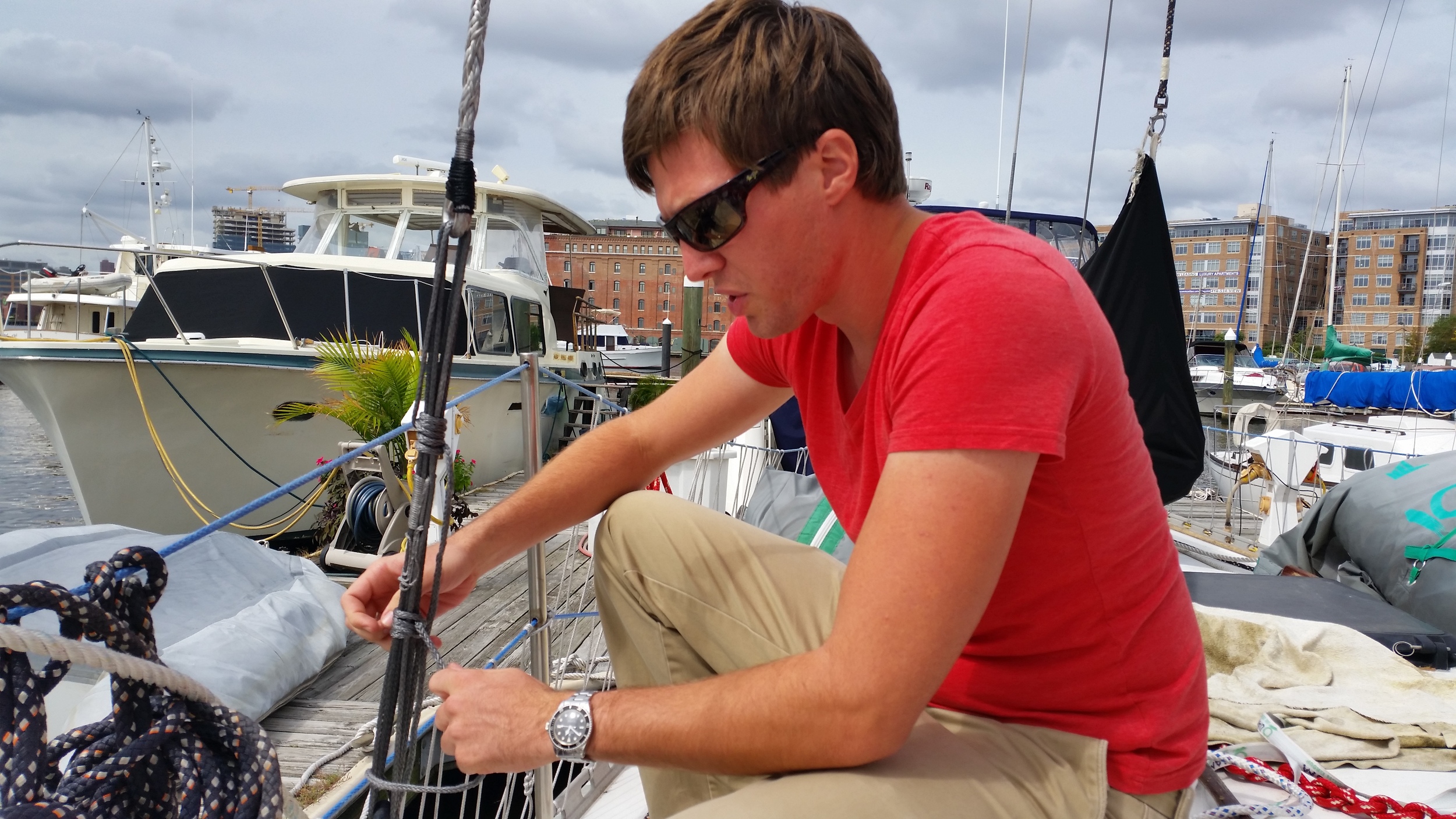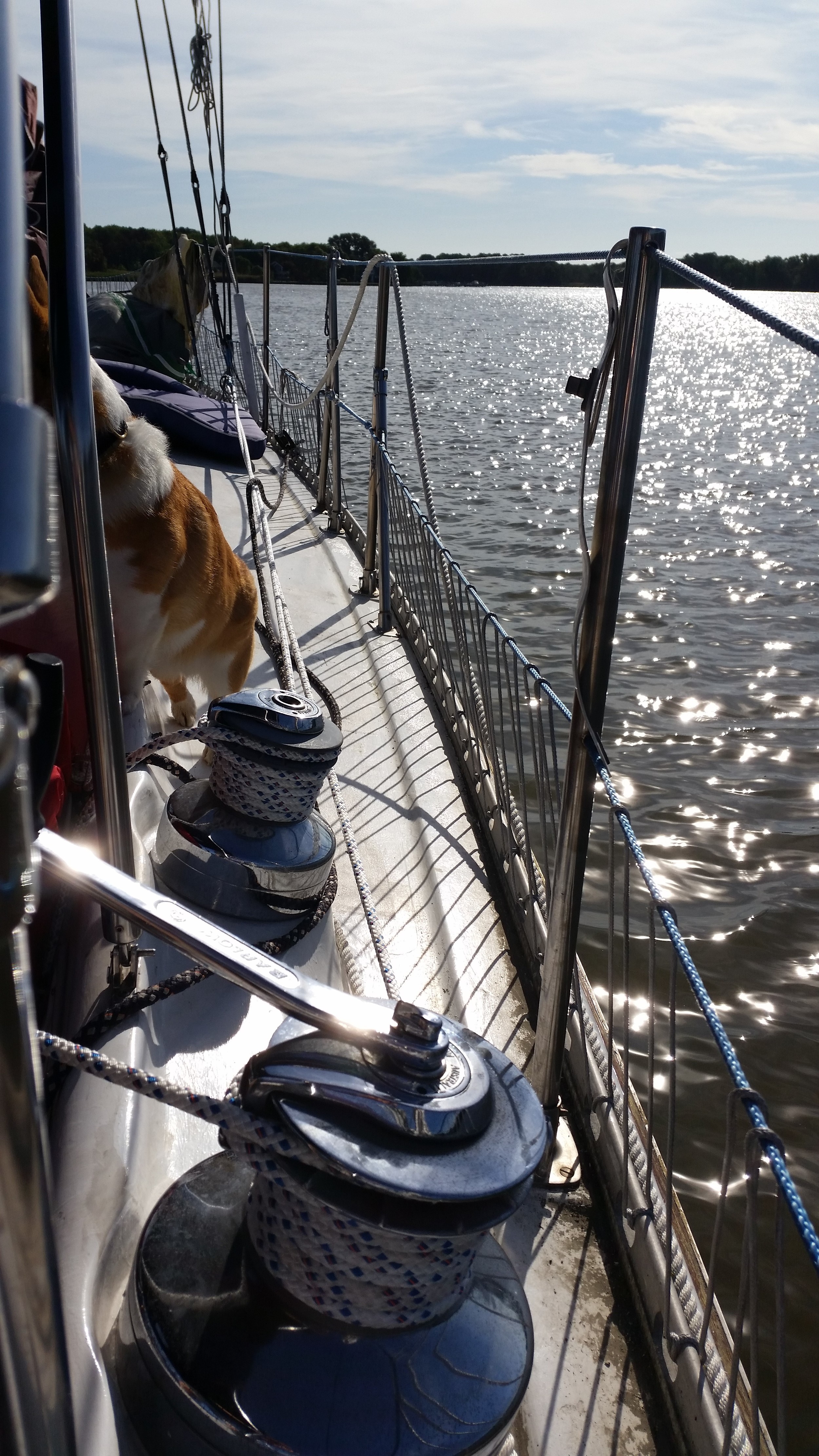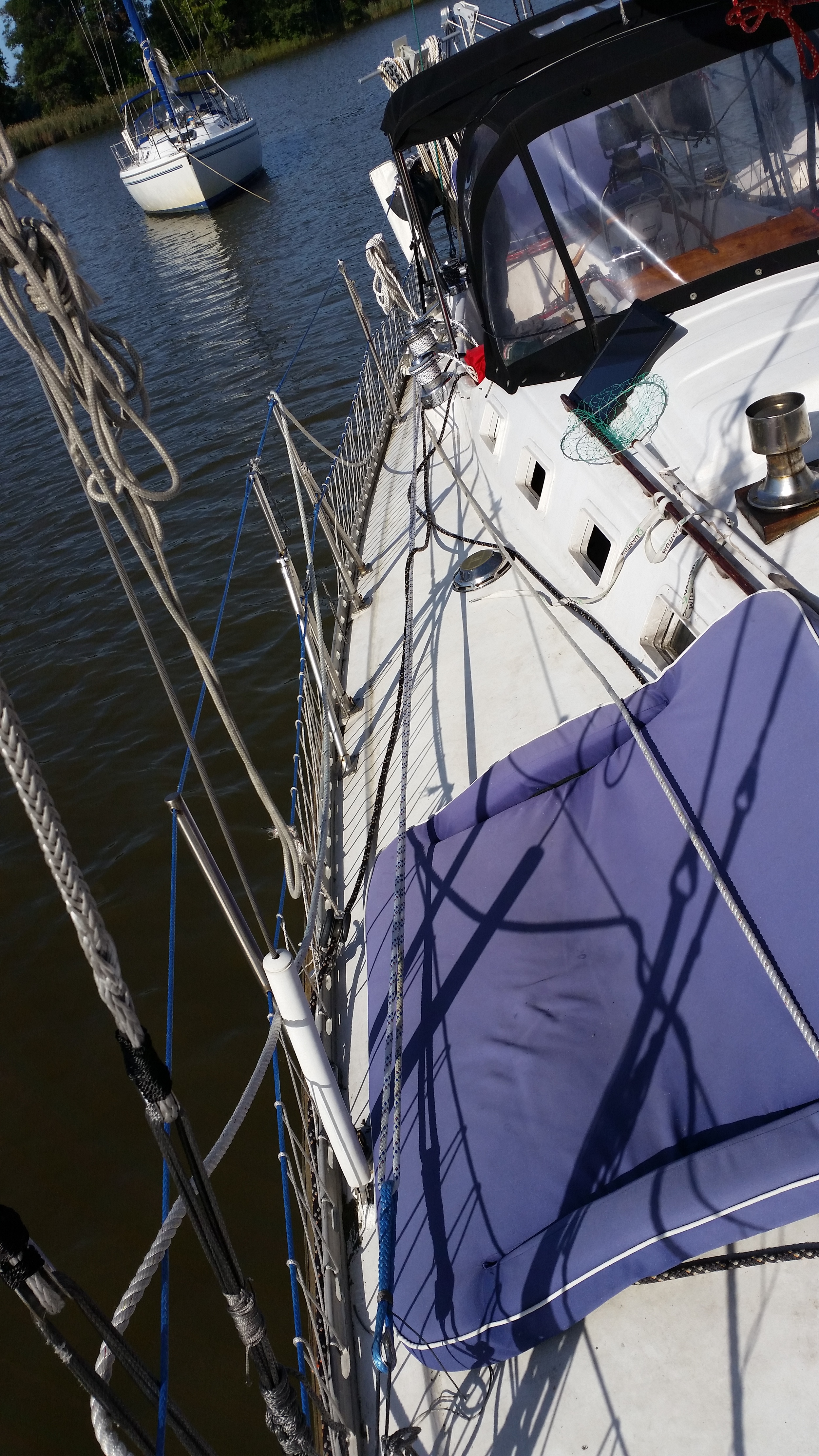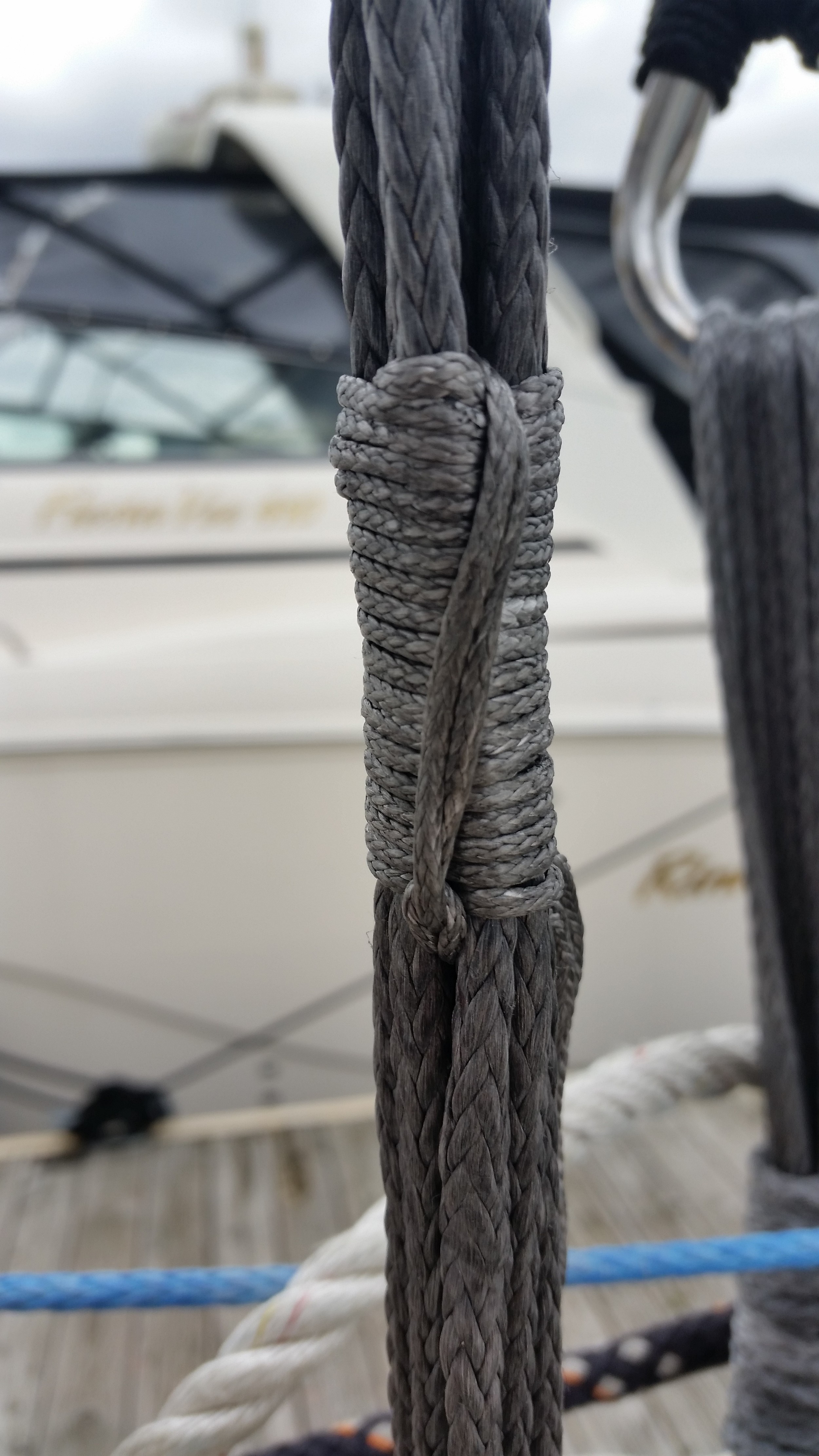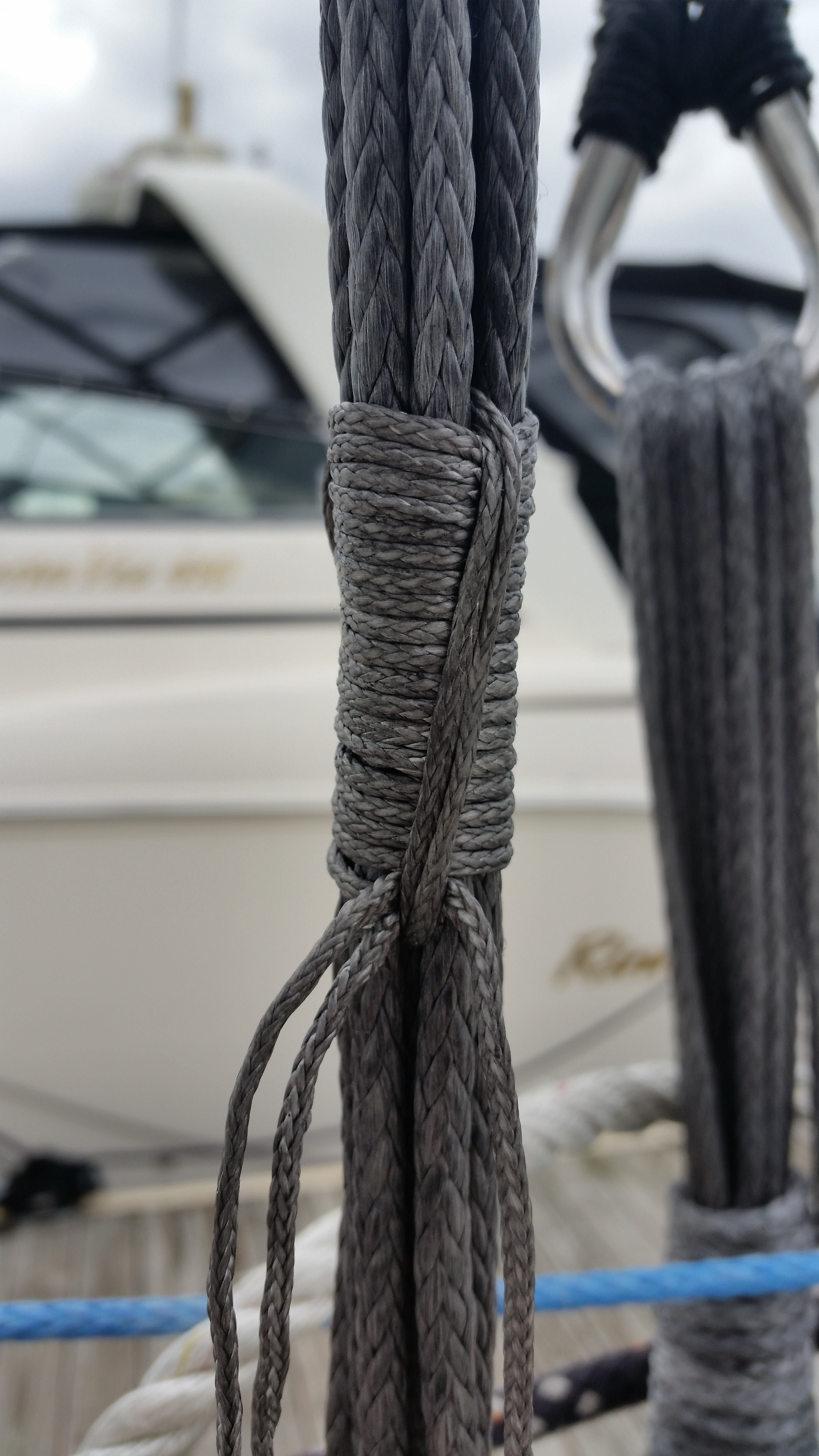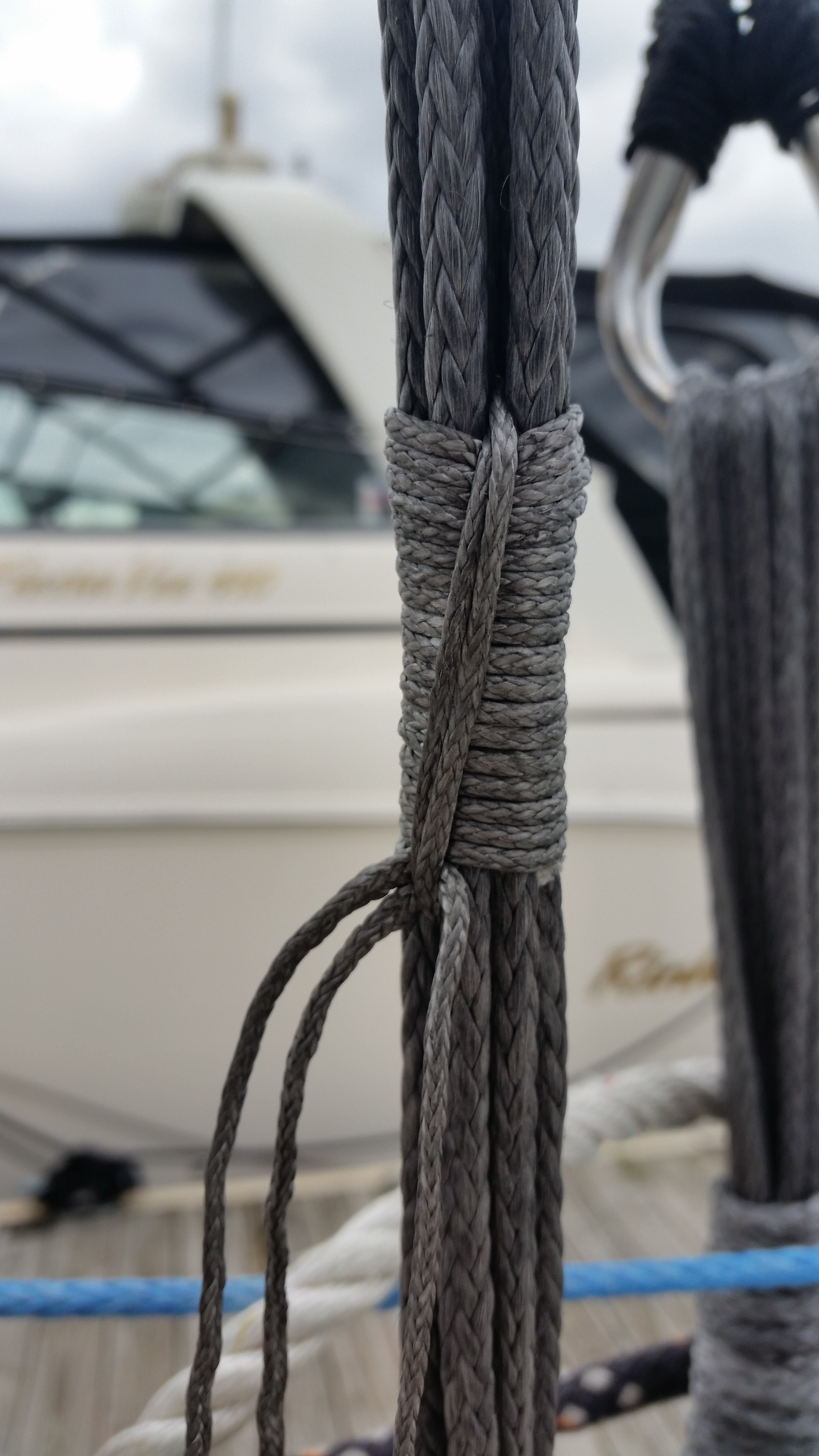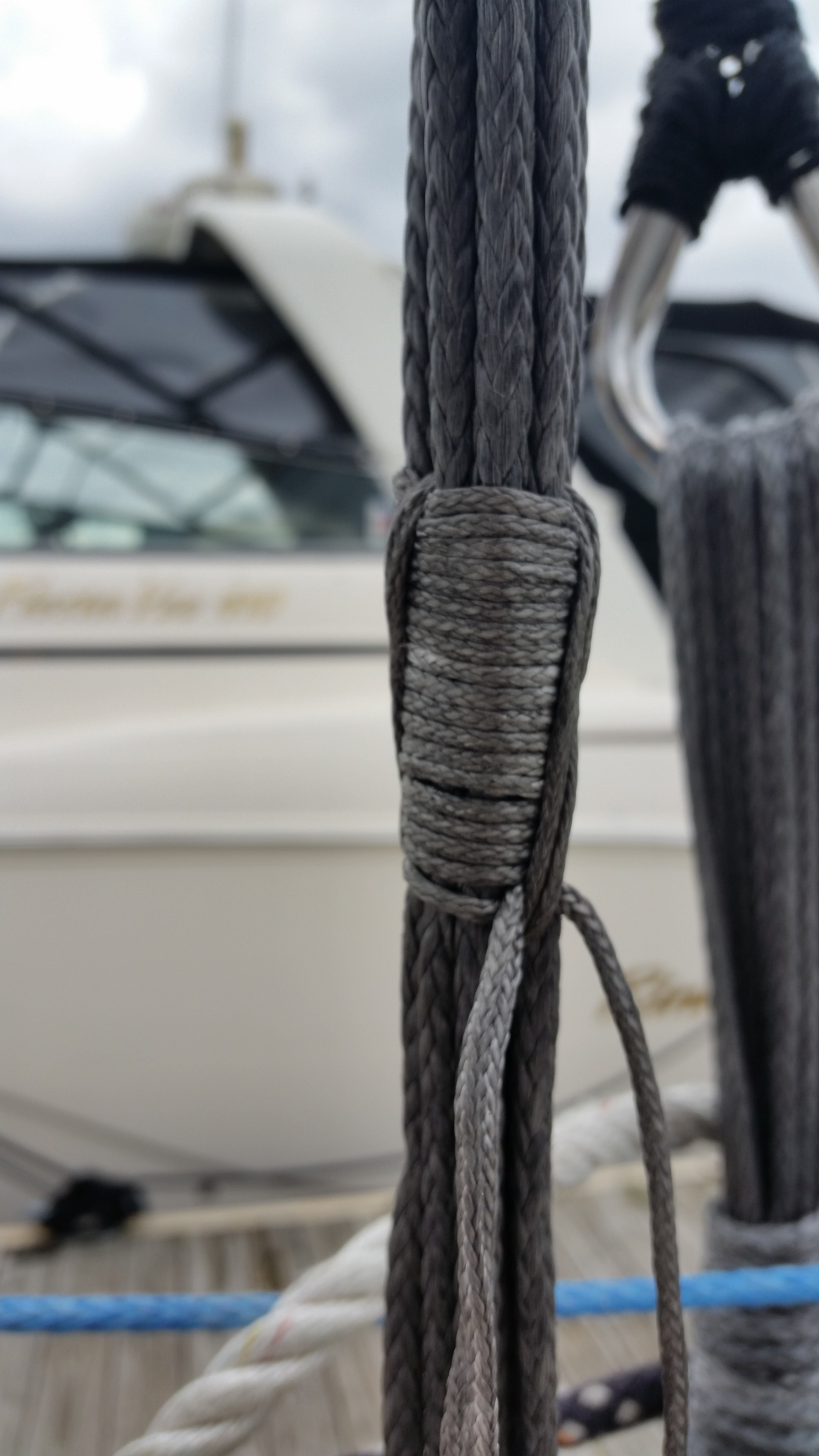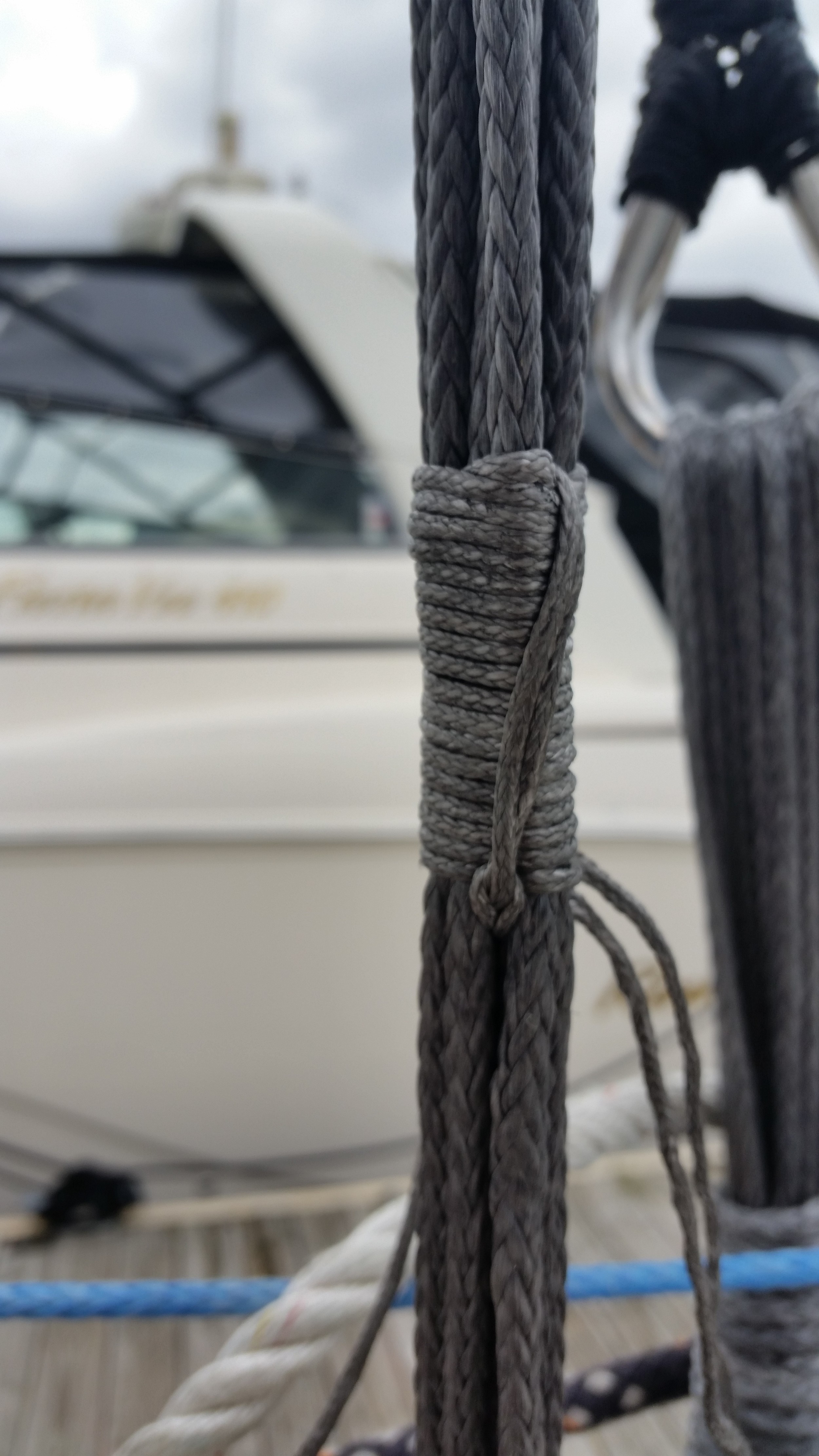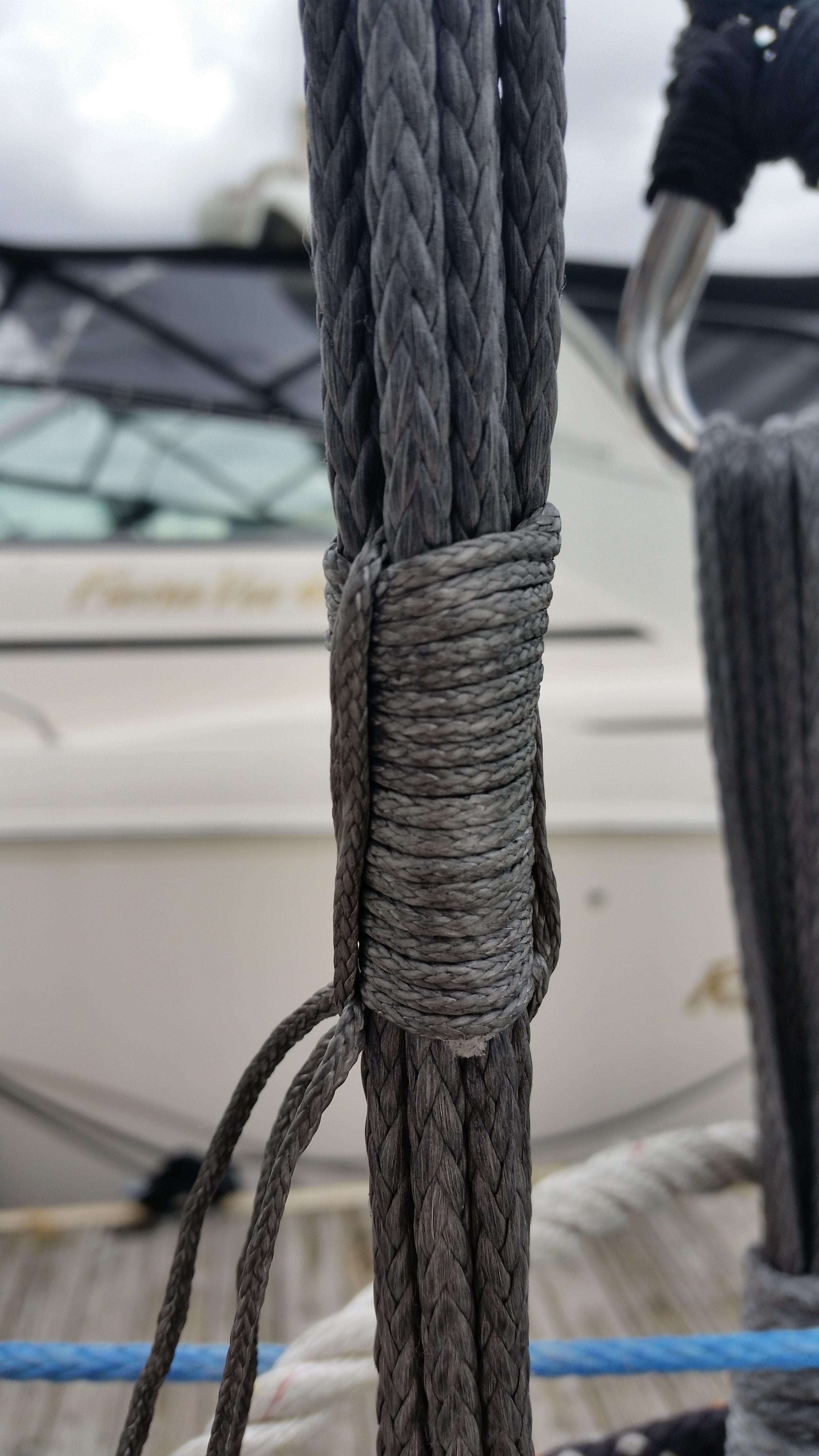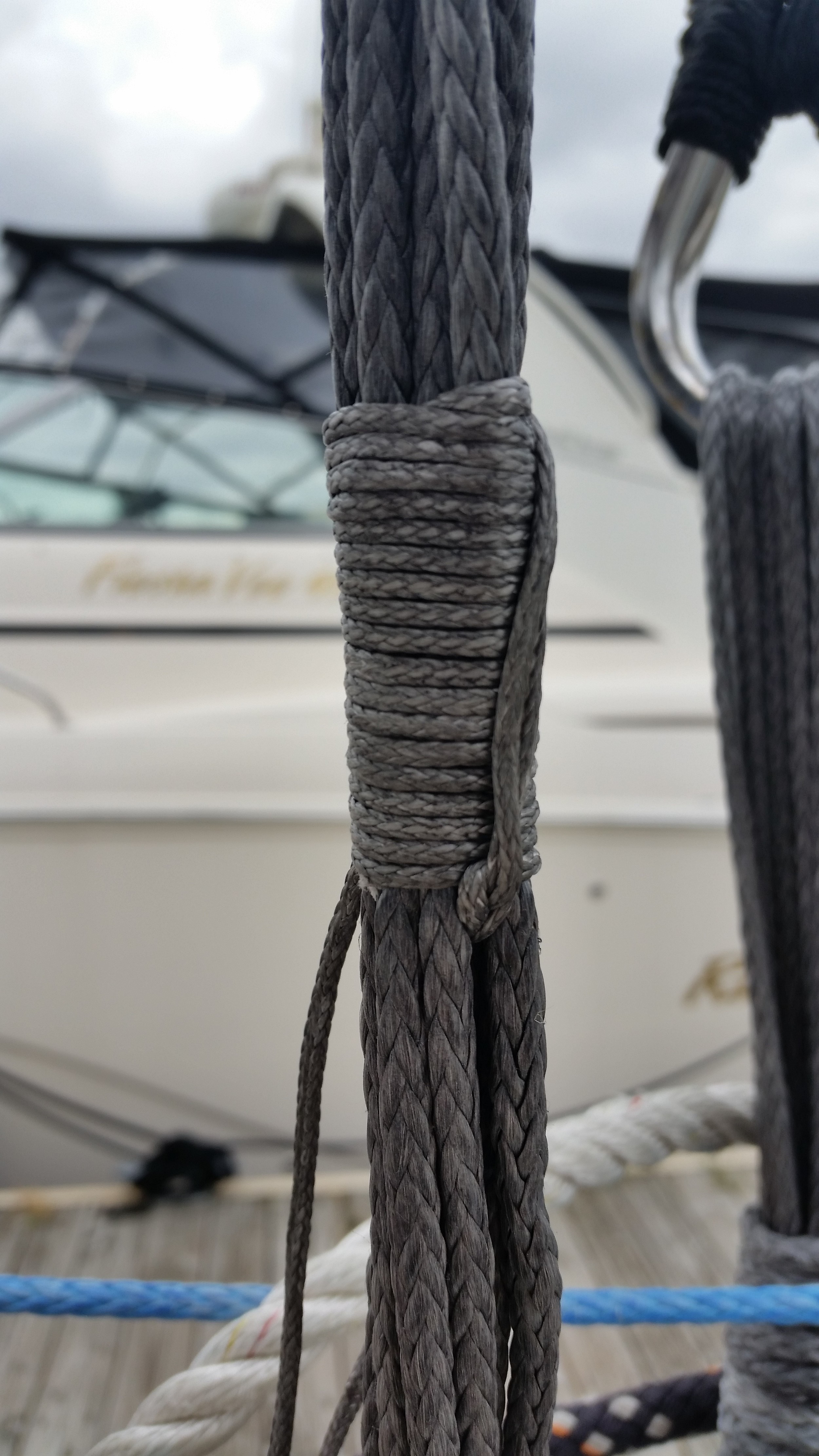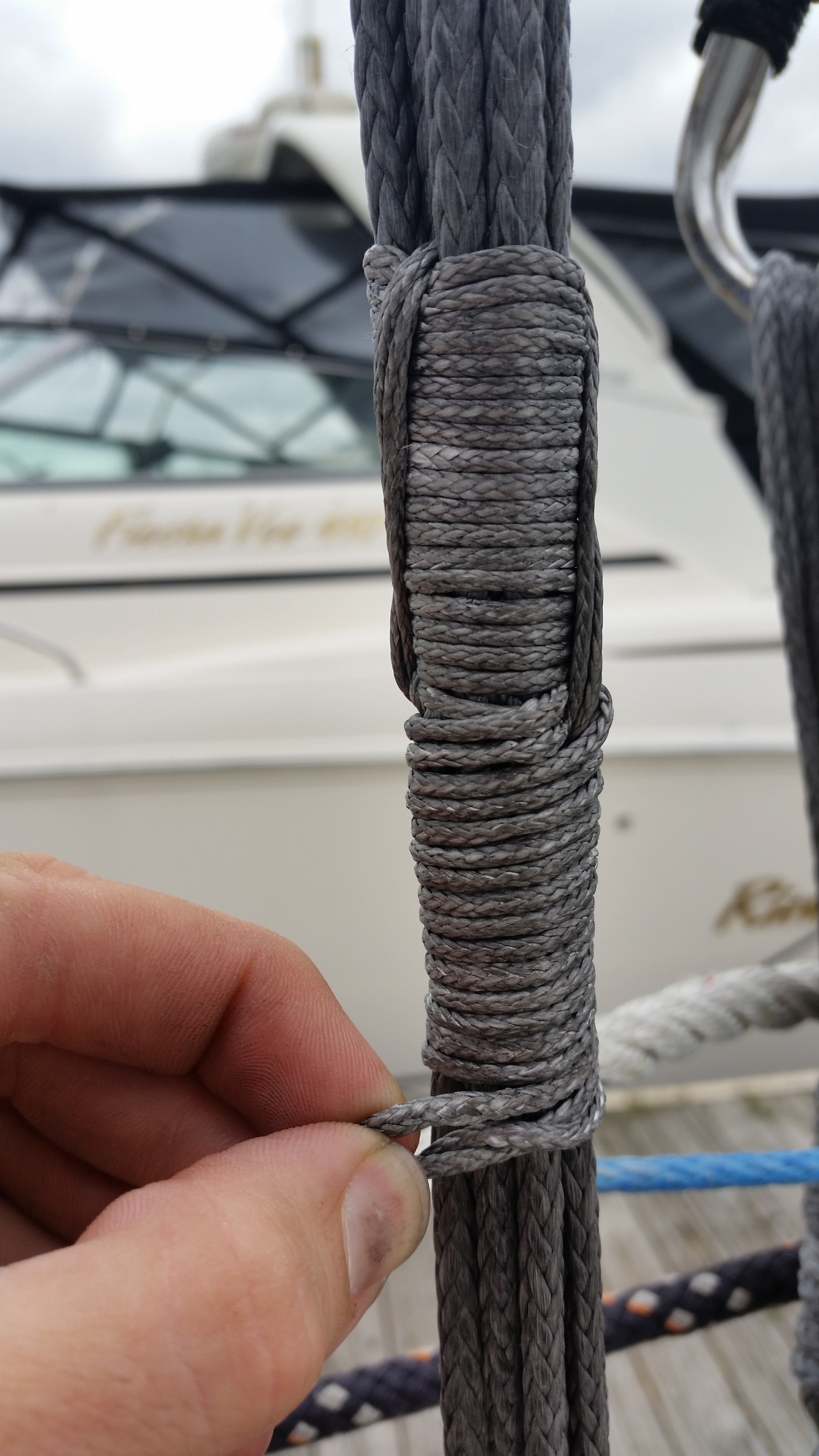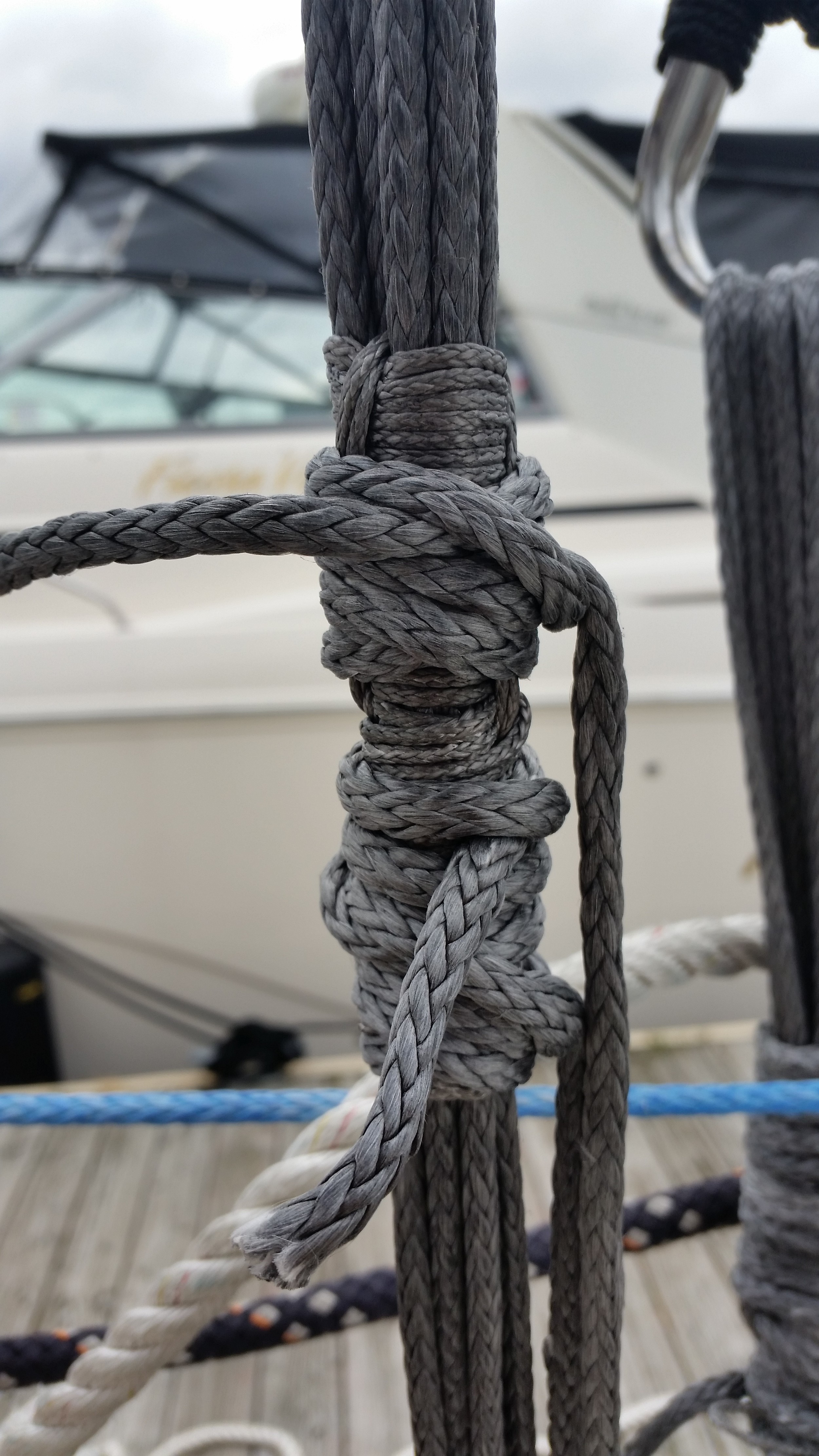I am holding onto the bow rail with all my might while flailing my arms and yelling for him to stop as we are now broadside to this tow. After what felt like an eternity, I yell out some harsh words at him and he cut his engines. When he comes up alongside of us, he asks if we are ok? He says that he was hailing us on the radio but didn't hear a reply.
How would we reply? And if you see a large sailboat being pulled onto its side, wouldn't it be best to stop rather than just call asking if we are ok?!
When he was along side of us, I asked the captain:
"Do you have a bridle?"
His response still echoes in my mind:
"What's that?!"
I explained what they are and how they work. He looked at me confused and said:
"I don't see how that would help."
I told Maddie that we are going to be on a sleigh ride through hell to Deltaville, and then we can fix the fouled prop to resume our journey.
We were tied up improperly and set off on our tow, led by our moronic tow boat captain, beam to the seas! We were pitching and rolling horribly as we were taking waves straight onto the topsides. Some waves would catch us in a roll and we would board the vessel, crashing into the cockpit and rolling over the deck. I radioed him and asked if he would please quarter the seas and slow down, as we were moving along way too fast for these seas on the beam.
Once again, I was astounded when he responded telling me that he doesn't know what "quarter seas" are and that he's being pounded out there.
We grew tired of his poor navigational choices and decided to make the most out of the situation. When we would see the king wave in the set coming, we would turn and quarter the seas with our rudder, and yank him along for the ride. When you match up a 17 ton full keel sailboat against a 17 foot whaler, size does matter, and he would be pulled along like a toy in a bathtub.
As we arrived in Deltaville, he then brought us into the pier at a rather high speed for a boat under tow. I need 1.8 knots to maintain steerage, but I dock using prop walk at around 0.5 knots. We came into the pier doing 2.5 knots and the dockhands at the marina began yelling at him to slow it down. He did what looked like a crash stop to bring all of my mass to a stop before plowing into the vessel in front of us.
I've been towed many times, it's what happens when you have an old diesel engine and not enough sail area. It would always end up that the engine would die when there was no wind, or there was no wind so I was forced to rely on a death stricken diesel engine. Either way, ALL of my previous tows with Boat US have been delightful. They come along side, they throw you a bridle, they make sure it's attached properly and that everyone is prepared for the tow, they ask if you are ready and await your response, then they begin the tow slowly and gradually bring you up to speed while keeping everything manageable and under control.
This moron simply tossed us a line and gunned his engines. It was so bad, that Maddie has told me that we must exhaust every possible resource before we call a towboat. This was Maddies first tow, and now she is traumatized by the thought of another.
At least we were now in Deltaville, VA and were ready to have the boat hauled to fix and check the fouled prop.








